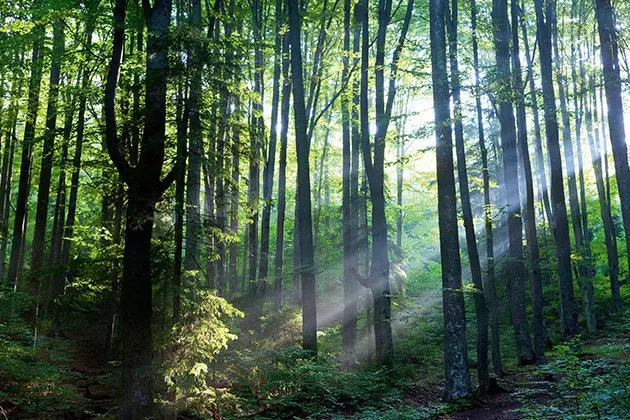
200 species of trees live in Romanian forests
This year the arrival of spring it has been generous in rains and, as soon as the sun rose, the countryside responded by lighting up the meadows with a dense blanket of wildflowers in a thousand colors. Birds and insects celebrate in a frenzy, creating an exhilarating soundtrack, a jam-session with the bells of the cows that graze in the shelter of the Carpathian mountains. This natural symphony, together with the penetrating aroma of hay bales, produces an intoxicating effect, almost narcotic . Until the persistence of a bee-eater snaps Paul Lister out of his reverie.
"These forests are the Amazon of Europe" , he suddenly concludes with the nervous British accent of his. He seems to have found the final sentence for one of his papers. Like a good billionaire, Lister is used to surrounding himself with beauty, but Romania has something very special. These forests and rural landscapes of Transylvania are a relic, a direct link to the remote past, the purest ecosystem, immaculate and best preserved of our old continent. "Isn't it amazing that the world isn't aware of the value of all this?" He asks me. without taking your eyes off the peaks.
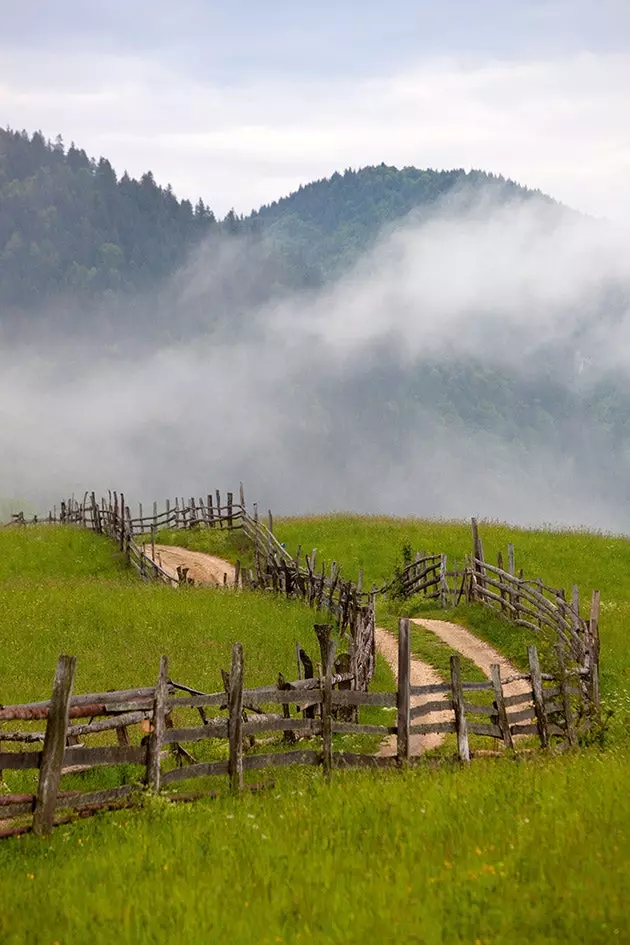
Very close to the town of Bran, with a view of the valley and the Transylvanian mountains
Of all the forest that covered Europe in the 11th century, only a symbolic one percent remains, perhaps less. And most of this little green souvenir is here, guarded in the Carpathians. The great mountain range forms an arc of 1,500 kilometers on its way through seven countries, from Czech Republic to Serbia , but it is in Romania, with 27% of its original forest almost intact, where biodiversity reaches its greatest expression. The largest carnivores in Europe live here. wolves, lynxes , almost half of Europe's brown bears and an incredible profusion of habitats and species, from lichens to fungi and truffles! In the most inaccessible parts the forest is still a virgin. And Lister is hell-bent on keeping it that way. For this he is "buying virgin forest areas and adjoining lands to create a national park which will eventually be returned to the state”, he explains to me. “We are creating Europe's own Yellowstone , the largest biological protection area on the continent”.
Heir to the fortune his father made selling furniture ( he was the owner of the IMT chain ), Lister became a patron of nature when he turned 40. He bought 23,000 hectares in the Scottish Highlands and he created the Aladalle reserve. In the last decade he has planted more than 800,000 trees , he has flooded the peat bogs that had been drained and has reintroduced species that have disappeared in the area, such as the wild boar, the European bison and now he plans to do it with the wolves, a somewhat more sensitive issue. “ Scotland is a natural disaster. We all love its landscape but in biological terms it is dead”, he says. Quite the opposite of Romania. Your forest conservation mission of the Carpathians is the other side of the same coin. For me Romania is an old and dear acquaintance. Seven years ago now I was lucky enough to travel with time (and little money) through a Romania that was preparing for its entry into the European Union.
Crossing Transylvania on trains where you could still smoke and stick your head out the window, I traversed the gorges that appear in Bram Stoker's Dracula, I traveled on foot and in wagons the villages of Maramures (since then one of my favorite places in the world) and hitchhiked to the painted monasteries of bucovina , in the Moldova region. Bucharest, call the paris of the east , was then a sad city, of an enigmatic but lackluster beauty, where swindlers and rabid dogs roamed freely. Things have changed a lot in recent years. To the legendary ** Athenee Palace in Bucharest **, the hotel of kings and spies , now part of the Hilton family, has had several competitors among international chains and the occasional boutique hotel; and in the dilapidated buildings of the Old Quarter, the Old City, today renovated and pedestrian, a new French bistro opens every day, an art gallery and three cocktail bars.
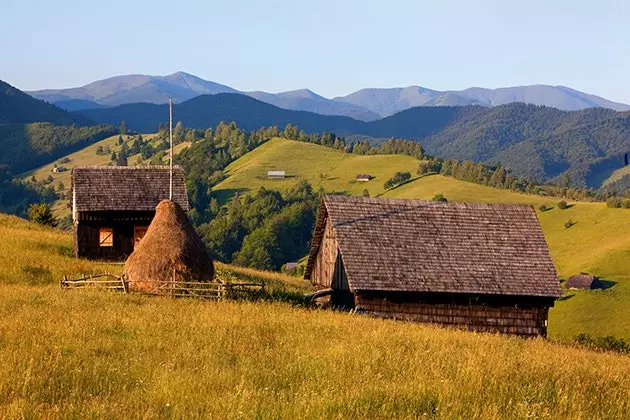
One of the Inn on Balaban cabins, you can rent them whole!
This time I address to the southern Carpathians , about four hours from the capital, where Lister and a series of biologists and generous eco-benefactors are joining forces (and land) to create Europe's Yellowstone between the Cordillera de Piatra Craiului and the impenetrable mountains Fagara . To, later, continue the route through the sleepy Saxon villages that extend between the cities of Brasov, Sighisoara and Sibiu. A space anchored in time where it is still possible to run into criers –or with Prince Charles of England himself– and the rhythm of day to day is marked by the coming and going of shepherds and their flocks. Night has not yet fallen when we climb the hill on which it sits balaban.
Ever since we passed the famous Bran Castle (erroneously linked to the figure of Count Dracula), just fifteen minutes ago, a storm coming from the bottom of the valley threatens to ruin our country barbecue in the light of the full moon. "Welcome to his house," greets us a man with copious gray hair and honest look . Obviously they were expecting us. The first notes of an old transylvanian song played on the flute are received with the crackling of the sky broken in a flash.
Dan Dimancescu is quite a personality for the work of recovering Romanian memory that he has been carrying out for years, and the owner of the idyllic Inn on Balaban . At first glance, Balaban, with its little houses dotted around the hill, has the appearance of a well-kept traditional farmhouse but is actually one of the best examples of the kind of accommodation for sensible travelers that is springing up in the region, a “ shelter from the intrusions of modern life ”.
There's no TV , although many books and many topics of conversation, privileged views , with mountains in every direction and wide open meadows where you can scamper down the hill like Heidi. If you want more activity, you just have to say it: excursions for all tastes, antique decoration workshops, sleigh rides in winter... "We are also having a lot of success with events and company meetings," Dan assures me. , whose family, at the beginning of the 16th century, fled the country when the communist regime expropriated their land. They had a farm exactly like this one on a neighboring hill . Due to its heritage value, the old Dimancescu-Bastea house is exhibited in the Astra ethnographic museum in Sibiu. and Dan, who was born in the United States , after winning all the necessary litigation to reclaim his family's land , he has managed to build a replica with traditional methods. Inside, both in the main house and in the other cabins that are rented out entirely, the rooms display antiques and hand-painted furniture in the Szekler style, an ethnic group of Magyar origin. “Very little is known about this country,” Dan laments.
“Did you know that caving is a Romanian invention? Ours is a cave culture. We have the Neolithic at our fingertips and it has hardly been investigated”, he explains to me as we sip a bottle of homemade pàlinka (a high alcohol content fruit liqueur) and snack on the transylvanian sushi (sliced bacon) left over from dinner. “In Romania more than 12,000 caves have been located. In 2003, in one of them a group of American anthropologists discovered the remains of the oldest Homo sapiens in Europe (between 34,000 and 36,000 years old ) ”. In addition to knowing everything, Dan is a multifaceted man.
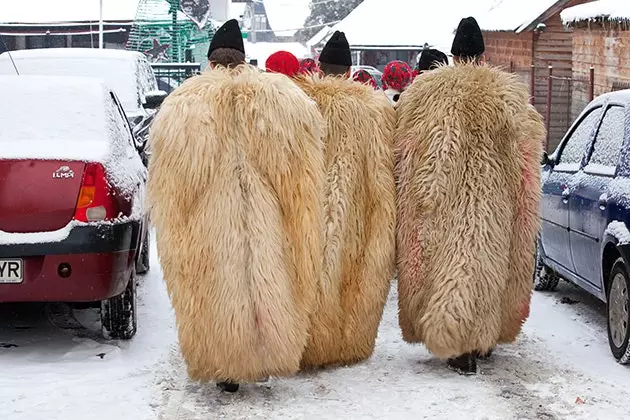
Bear's feet also serve as a shelter in rural areas of Transylvania
Specializing in management consulting, he founded the first mapping company in the United States to use digital technology, he carries out the functions of honorary consul of Romania in Boston , he has led four expeditions for the National Geographic in the land of his ancestors and, insofar as he takes sabbaticals to carry out his field studies and record documentaries on Romanian culture through his own production company. His interest now focuses on the “ guardians of knowledge, such as potters and carpenters ”, a tradition that in this country is lost at the dawn of time. the howl of the wolf It's not something you want to hear in the lonely echo of the night. Or if?
About 30% of Europe's wolf population lives in these mountains , a number that seems to be happily increasing. This is largely due to the work of people like Christoph Promberger, a German wolf biologist who, between 1993 and 2003, launched the Carpathian Carnivore Project with obvious results. Today he is Lister's right-hand man in the area. He's the one in charge of cataloging the lands , convince their owners (who must be found first) to sell them to one of Lister's conservationist friends, and to clear and return to their original state the 28,000 hectares that have already been acquired, 13,000 of full protection and 15,000 hectares of rented hunting ground. “ Communists loved cement ", it states. "Even in the middle of the forest, out of nowhere, there are concrete blocks." Not to mention the ongoing battle with illegal logging and indiscriminate hunting. “We buy the hunting licenses and then we don't use them. That way we prevent others from doing it”, she confesses to me. Christoph lives very close to the future national park, on a farm that looks like Noah's ark. His golden-braided daughters are the happiest girls in the world.
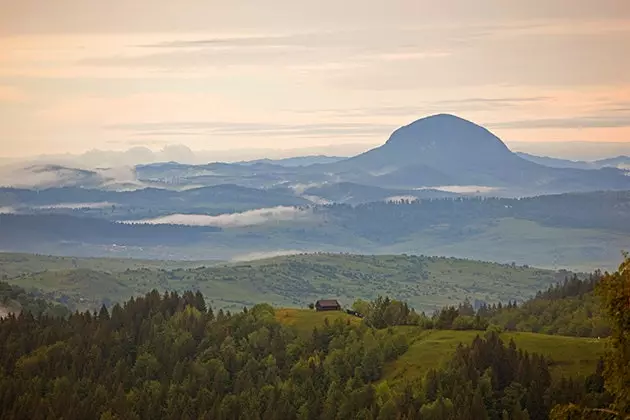
Evening panorama of the rural landscape of Transylvania
The farm, under the name of Equus Silvania It works as an equestrian center. Without fences or fences dividing the fields, this country is an open highway for riding, although “Ceausescu exterminated many horses because he considered them a medieval symbol against industrialization ”, explains Barbara, Christoph's wife, also a biologist. Equus Silvania has become the goal of fans of the riding holidays , mainly for Nordics and British. The perfect place to spend the days riding a horse and, at sunset, after dinner, go out to see bears.
Bears have a wonderful sense of smell. "No perfumes, no sweets... eliminate odors as much as possible, please," Christoph warned us before leaving. I'm sure the watermelon gum the guy sitting behind me was forced to leave in the car is the reason we've been waiting almost an hour for the bears to show up. The claim is a corn cob feast placed on a fallen trunk. Sitting on benches in a row in front of the panoramic window of a small camouflaged cabin at the entrance to a forest clearing, we slow our breathing and check again and again that our cameras are ready and silent. Watch and wait. attention and patience . The senses are heightened. And, suddenly, two brown heads peek out from behind the undergrowth.
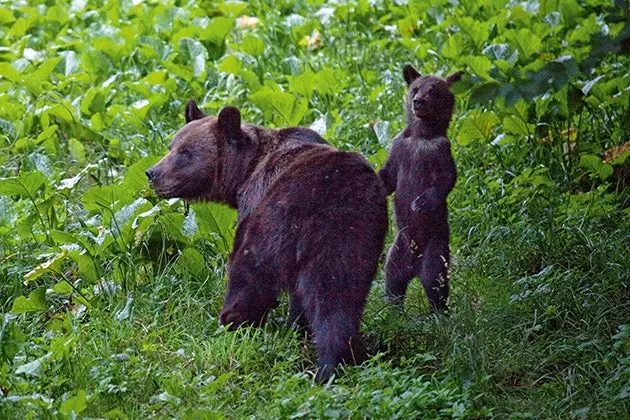
Almost half of Europe's brown bears live in Romania
As one moves through the towns of the Saxon lands of the Tarvane Plateau, in the triangle formed by the towns of Brasov, Sighisoara Y sibiu , time begins to slow you down. Even the car doesn't seem to want to go any faster, slowing down to catch up with the peasant carts, almost the only vehicles on this bucolic road. These green and fertile valleys were colonized by Germans in the 12th century, invited by the Hungarian king Geza II (1141-1162) . Most of them came from Franconia, in East Germany, and in the 15th and 16th centuries, faced with the Ottoman threat, they reinforced their towns with defensive walls and fortified churches. During the Ceausescu regime, most of these Saxons left Romania and many of its beautiful colored houses became occupied by gypsies.
In recent years, however, the heirs of these Saxons have invested to rescue the region from abandonment . On the road that leads to the small town of cund , one hour from Sighisoara – birthplace of Vlad Tepes –, it is easy to get lost, distracted by the (bucolic) beauty of the path. But getting lost in this harmony of green hills is lucky: you have to arrive at Cund hungry (and in no hurry). The Valea Verde table is always a veritable feast of local delicacies . Jonas Schäfer, owner of this rural resort, is the virtuoso chef everyone is talking about these days in Romania. It has become a gastronomic reference in Romania.
while serving us a Valea Verde Cuvée Alb , one of the wines that they are starting to produce and sell through their website (soon they will also start organizing guided tastings of local wines) next to a beautiful pool-pond in which the Lily pads , he begins to explain to us the story that brought him here (which led him to create this rural hotel). A beautiful fig tree protects us from the pungent late spring sun. “After the fall of Ceausescu, my father, who he was always an idealist , sold his possessions in Hamburg, where we lived, and came to set up an association to help school children. children from disadvantaged rural areas ”, He tells us proudly. "My wife Ulrich and I arrived shortly after, in 1993."
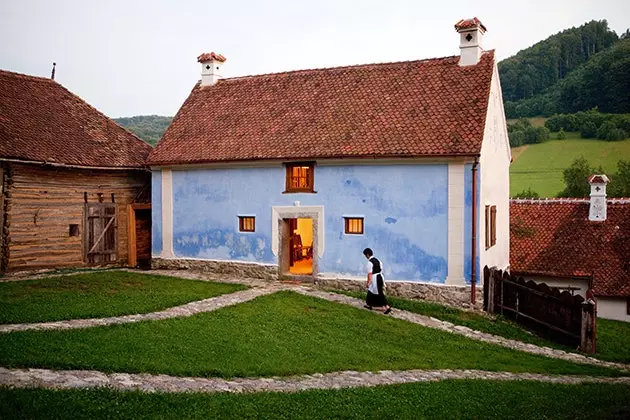
Exterior of Charles of England Bed and Breakfast in Transylvania
By then, Cund was one of the poorest Saxon towns . Now, people from the most unexpected corners of the world come here with the sole purpose of enjoying Jonas' proposals. "Going to eat in remote places is very fashionable." I know.
“ Some come to eat by helicopter ”, he adds pointing in the direction of the field where they land. But curiously, the average stay in Valea Verde is nine days. Looking around it is easy to understand why. Apart from lounging in this garden that you don't feel like leaving, here the days go by between the trill of the birds, walks around the area (on foot, by bike or on one of the property's eight friendly horses) and three meals a day, worthy of Michelin stars.
In season, there are few more indicated places to go out looking for truffles and they have recently started hosting boy scout school groups. “Is there anything you don't like or are allergic to?” asks Jonas. In Valea Verde there is no menu. One trusts his palate in the know-how of the chef. Today the menu is tuber mousse, mangalitsa stew (a cholesterol-free Hungarian breed of pig crossed with sheep) and apple struddel, with wines from the Dragassi cellar. Inside the forest, the beams of light through the treetops make me think I'm in a cathedral. It smells like life in motion. The question is: Do we sit back and watch this ecosystem disappear or do we act?
- This article is published in the May 73 Condé Nast Traveler magazine. This issue is available in its digital version for iPad in the iTunes AppStore, and in the digital version for PC, Mac, Smartphone and iPad in the virtual newsstand of Zinio (on Smartphone devices: Android, PC/Mac, Win8, WebOS, Rim, iPad) .
*** You may also be interested in...**
- 50 destinations with castles - Truths and lies of Dracula's (multiple) castles - The castle described in the Dracula novel - Ten most magical forests in Europe
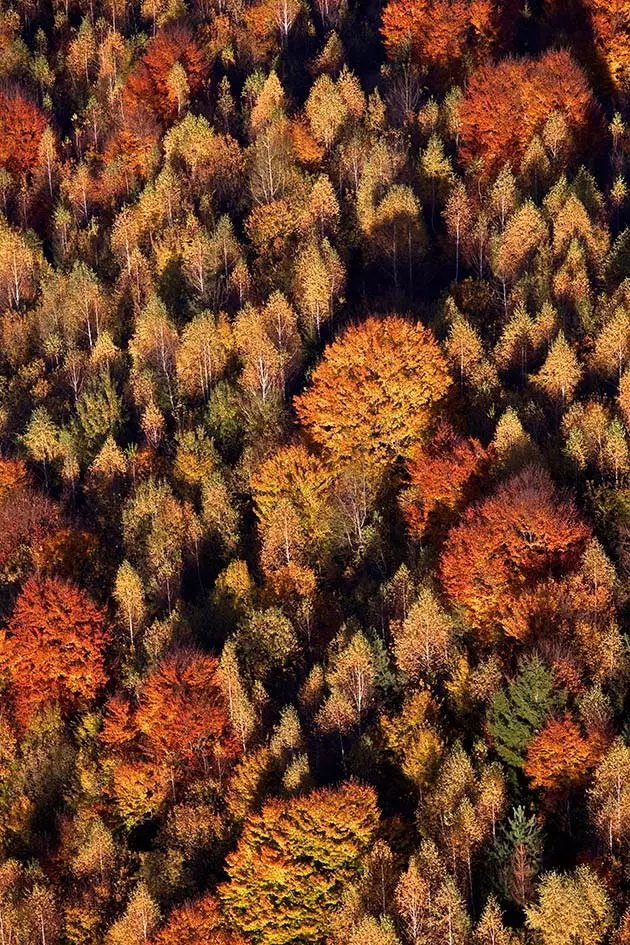
Aerial view of the forests that will be part of the future great Carpathian National Park
